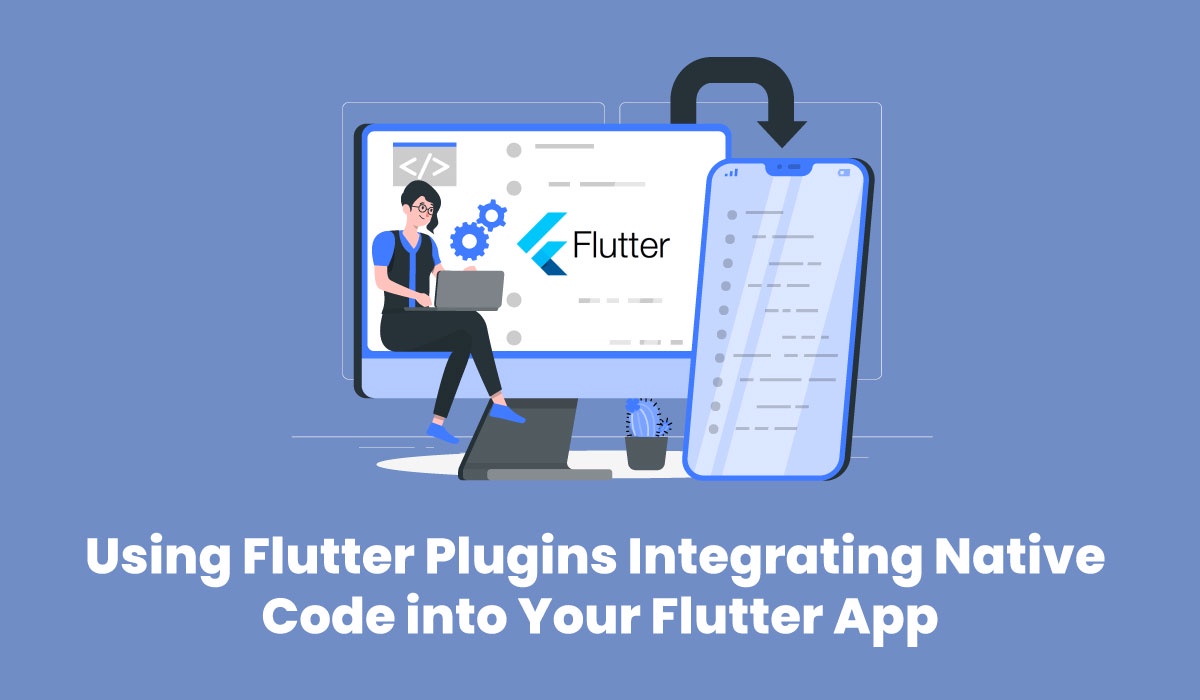Flutter, Google's open-source UI software development toolkit, has gained immense popularity for its ability to create natively compiled applications for mobile, web, and desktop from a single codebase. While Flutter provides a rich set of pre-built widgets for building beautiful user interfaces, there are times when developers need to integrate native code into their Flutter apps to leverage platform-specific features or existing native libraries.
This is where Flutter plugins come into play, acting as bridges between the Flutter framework and native code. In this blog post, we'll explore the world of Flutter plugins and how they empower developers to extend their apps with native functionality seamlessly.
Understanding Flutter Plugins:
At its core, a Flutter plugin is a package of Dart code combined with native code written in languages such as Java or Kotlin for Android and Swift or Objective-C for iOS. Plugins serve as intermediaries, enabling communication between the Flutter framework and native code. They encapsulate platform-specific functionalities, making it possible to access native features without compromising the cross-platform nature of Flutter.
The Anatomy of a Flutter Plugin:
A typical Flutter plugin consists of three main components:
- Dart API: The Dart API provides the interface through which Flutter widgets can interact with the native code. Developers use Dart to call methods exposed by the native code and receive results.
- Platform Channels: Platform channels facilitate communication between Dart and native code. They define a contract for method invocation and enable the passing of parameters and data between the two environments.
- Native Code: The native code is written in the language specific to the platform (Java/Kotlin for Android, Swift/Objective-C for iOS). It implements the functionality required by the Flutter app and communicates with Dart through platform channels.
Creating a Flutter Plugin:
Developers can create their own Flutter plugins to integrate native functionality into their apps. The Flutter tooling provides commands to generate the necessary project structure for Android and iOS, making it easier to get started. Once the project structure is in place, developers can write the Dart API, establish platform channels, and implement the native code, suggests Flutter application developers at Webomindapps.
Popular Flutter Plugins:
The Flutter community has produced a plethora of plugins that cover a wide range of functionalities. Some notable examples include:
- camera: Enables access to the device's camera for capturing photos and videos.
- geolocator: Provides geolocation services, allowing apps to retrieve the device's location.
- firebase_core and firebase_auth: Integrates Firebase services into Flutter apps for features like authentication and real-time database access.
- sqflite: Offers SQLite database support, allowing developers to implement local storage in their Flutter apps.
- url_launcher: Facilitates opening URLs in the device's default web browser.
These plugins showcase the versatility of Flutter in tapping into native features seamlessly.
Best Practices for Using Flutter Plugins:
a. Check Platform Support: Before integrating a plugin, ensure it supports the platforms you are targeting (Android, iOS, web, etc.).
b. Documentation is Key: Thoroughly read the documentation of the plugin to understand its features, usage, and potential limitations.
c. Keep Plugins Updated: Flutter and its ecosystem are evolving rapidly. Regularly update your plugins to leverage the latest features and improvements.
d. Understand Native Code: While you don't need to be an expert in native development, having a basic understanding of the native code can be beneficial when troubleshooting issues or customizing functionalities.
Challenges and Considerations:
While Flutter plugins offer a powerful way to integrate native code, developers should be aware of potential challenges:
- Plugin Compatibility: Plugins may not always be compatible with the latest versions of Flutter. Check for updates and community support before relying on a plugin.
- Platform-specific Code: Writing platform-specific code requires knowledge of native languages. Developers might need assistance from platform experts or collaborate with native developers when implementing complex features.
- Performance Implications: Excessive use of plugins, especially poorly optimized ones, can impact app performance. Evaluate the trade-offs and consider alternatives when performance is a critical factor.
Conclusion
In conclusion, Flutter plugins are invaluable tools for Flutter developers looking to extend their apps with native functionality. By leveraging the power of platform channels, developers can seamlessly integrate native code into their Flutter apps without sacrificing the benefits of cross-platform development. As the Flutter ecosystem continues to grow, so does the array of plugins available, offering an ever-expanding toolkit for developers to create feature-rich and platform-specific experiences. Embrace the versatility of Flutter plugins, and unlock the full potential of your cross-platform development endeavors.


No comments yet